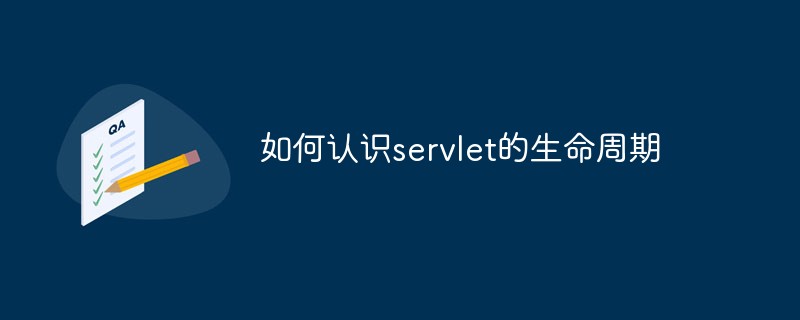How to understand the life cycle of servlet
Servlet life cycle: 1. In the initialization phase, the Servlet container will create a Servlet instance and call the [init()] method; 2. In the client request processing phase, each time a client request is received, the server will Generate a new thread for processing; 3. In the termination phase, call the destroy method to terminate.

Servlet life cycle:
1. servlet life cycle
There are three main methods:
init() initialization phase
- ##service() processing client request phase
- destroy() termination phase
Initialization phase:
The Servlet container loads the Servlet. After the loading is completed, the Servlet container will Create a Servlet instance and call the init() method. The init() method will only be called once. The Servlet container will load the Servlet in the following situations: The Servlet container will automatically load some when it starts. servlet, to achieve this you need to add 1 to the web.##Processing client request phase:
Every time a client request is received, the server will generate a new thread to process it. For the user's Servlet request, the Servlet container will create a request-specific ServletRequest and ServletResponse.For tomcat, it will put the passed parameters into a HashTable, which is a key-value mapping of String–>String[]
Termination phase:
When the web application is terminated, or the Servlet container terminates, or the Servlet reloads a new Servlet instance, the Servlet container will call the Servlet's destroy() method2 , The working principle of servlet
The client sends a request, and the Servlet calls the service() method to respond to the request. The service() method will match the requested method, enter the corresponding logic layer, and complete the request. the response to. But there are no doGet(), doPost() and other methods in the Servlet interface and GenericServlet interface. These are defined in HttpServlet, but all Error information is returned, so these methods must be rewritten every time a Servlet is defined.Sertvlet and GenericServlet are not specific to any protocol, while HttpServlet is specific to the Http protocol, so the service() method in HttpServlet forces ServletRequest and ServletResponse into HttpRequest and HttpResponse, and finally calls its own service method to complete the response.
Related free recommendations:
Programming video coursesThe above is the detailed content of How to understand the life cycle of servlet. For more information, please follow other related articles on the PHP Chinese website!

Hot AI Tools

Undresser.AI Undress
AI-powered app for creating realistic nude photos

AI Clothes Remover
Online AI tool for removing clothes from photos.

Undress AI Tool
Undress images for free

Clothoff.io
AI clothes remover

AI Hentai Generator
Generate AI Hentai for free.

Hot Article

Hot Tools

Notepad++7.3.1
Easy-to-use and free code editor

SublimeText3 Chinese version
Chinese version, very easy to use

Zend Studio 13.0.1
Powerful PHP integrated development environment

Dreamweaver CS6
Visual web development tools

SublimeText3 Mac version
God-level code editing software (SublimeText3)

Hot Topics
 1378
1378
 52
52


